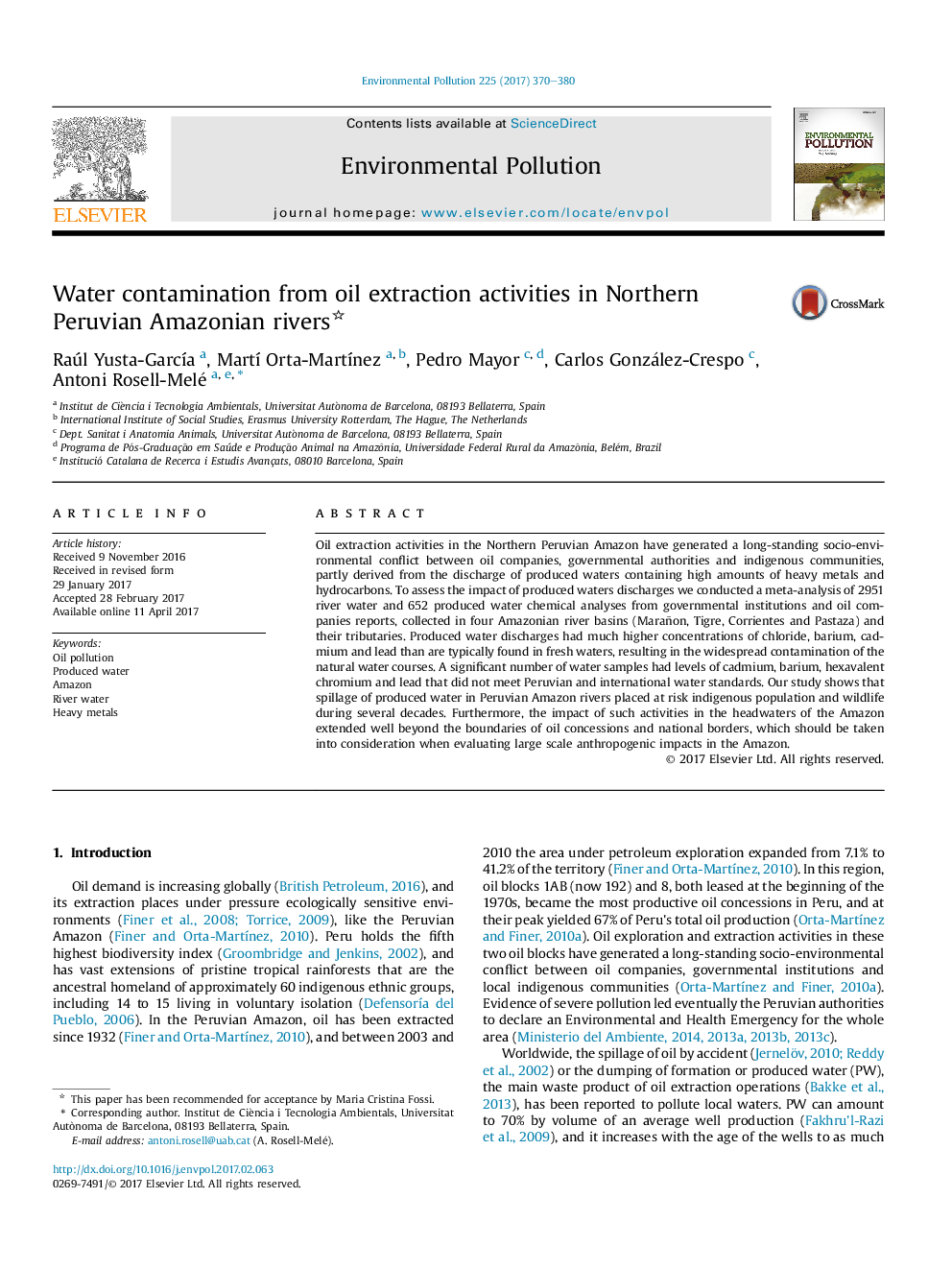| کد مقاله | کد نشریه | سال انتشار | مقاله انگلیسی | نسخه تمام متن |
|---|---|---|---|---|
| 5748944 | 1619148 | 2017 | 11 صفحه PDF | دانلود رایگان |
- Meta-analysis to assess impacts of oil exploration in the headwaters of the Amazon.
- Spillage of produced waters contaminated rivers between 1987 and 2013.
- Widespread contamination by chloride, cadmium and barium.
- Local population and wildlife exposed to hazardous levels of heavy metals.
Oil extraction activities in the Northern Peruvian Amazon have generated a long-standing socio-environmental conflict between oil companies, governmental authorities and indigenous communities, partly derived from the discharge of produced waters containing high amounts of heavy metals and hydrocarbons. To assess the impact of produced waters discharges we conducted a meta-analysis of 2951 river water and 652 produced water chemical analyses from governmental institutions and oil companies reports, collected in four Amazonian river basins (Marañon, Tigre, Corrientes and Pastaza) and their tributaries. Produced water discharges had much higher concentrations of chloride, barium, cadmium and lead than are typically found in fresh waters, resulting in the widespread contamination of the natural water courses. A significant number of water samples had levels of cadmium, barium, hexavalent chromium and lead that did not meet Peruvian and international water standards. Our study shows that spillage of produced water in Peruvian Amazon rivers placed at risk indigenous population and wildlife during several decades. Furthermore, the impact of such activities in the headwaters of the Amazon extended well beyond the boundaries of oil concessions and national borders, which should be taken into consideration when evaluating large scale anthropogenic impacts in the Amazon.
158
Journal: Environmental Pollution - Volume 225, June 2017, Pages 370-380
